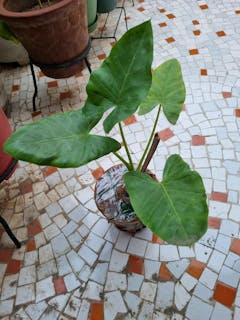Zephyranthus 'Sulphurea'
Family
Amaryllidaceae
Origin
Mexico
Description
Yellow Rain Lily is a hardy perennial , will form clumps to about 1 foot tall and wide of glossy, narrow green leaves. Bright yellow star-shaped flowers will appear during rainy season or following an increase in moisture or humidity.
Zephyranthes plants generally produce three upright petals and three identical sepals, ranging from narrow to broad. The foliage is grassy and bright green, and tends to have a prostrate habit: think of the narrow foliage of grape hyacinth bulbs, which is similar. An individual flower will only last a few days, with the heaviest flush of blooms occurring first. The bulbs may bloom occasionally throughout the rest of the season, especially after heavy rain.
Rain Lily ‘Sulphurea’ bulbs produce vibrant yellow flowers following rainfall, enhancing the vibrancy of monsoon gardens. Blooming occurs from June to September in plains and from July to October in hilly regions. Planting is recommended between February and April in plains or March and May in hills.
Environment
Zephyranthes will grow well in full sun to full shade, and do quite well in containers. Some dappled shade or afternoon shade is usually tolerated, especially in hot climates.
Rain lilies thrive in average to rich garden soil. The bulbs exhibit tolerance to a wide range of drainage situations, both boggy and sandy conditions.
While rain lilies can survive periods of drought, flowers will not appear until a summer soaking triggers the blooms. Daily irrigating & sprinkling the bulbs thoroughly will also prompt flowering.
Rain lilies are best suited for warm, humid environments. They do not need to be fertilized, but little spread of compost over the ground before they emerge in the spring can give more bloom.
Rain lilies grow well in pots. The tops of the bulbs should be covered by an inch of soil. Although generally planted 2–4 inches apart when in the ground, when grown in containers, rain lily bulbs can be placed closer together, as they prefer being crowded.
Landscape Use
Best planted in mass for border plantings, a line along a walkway, decorate fence and around an ornamental tree.























